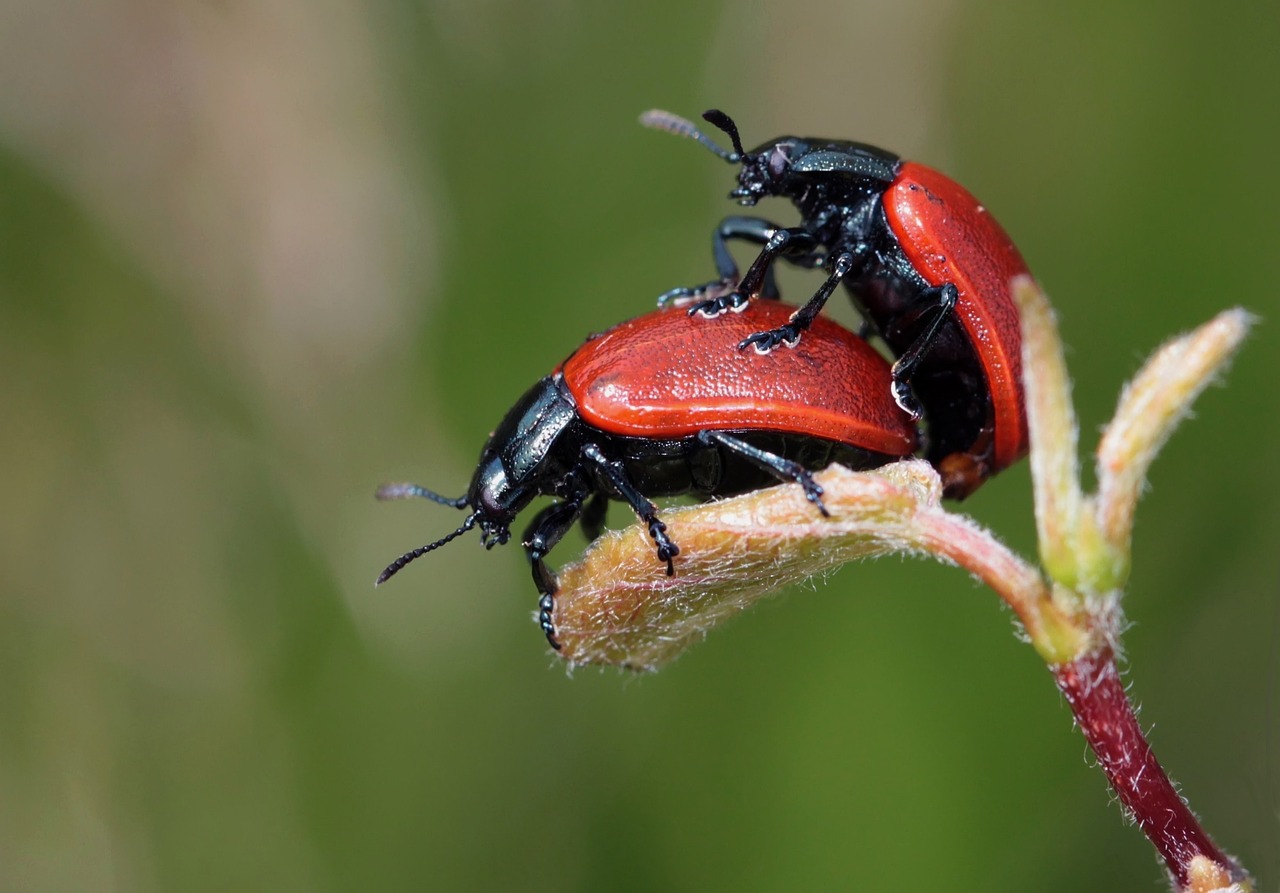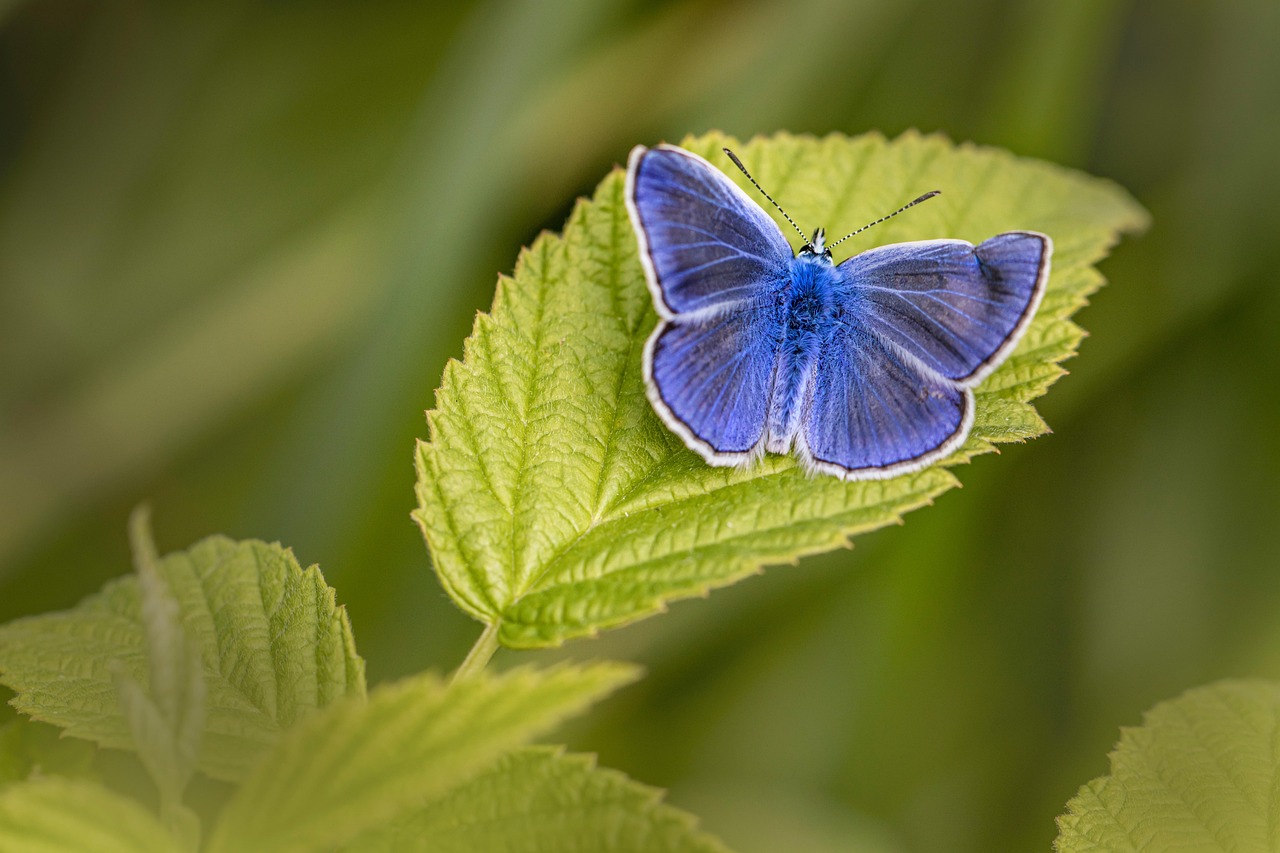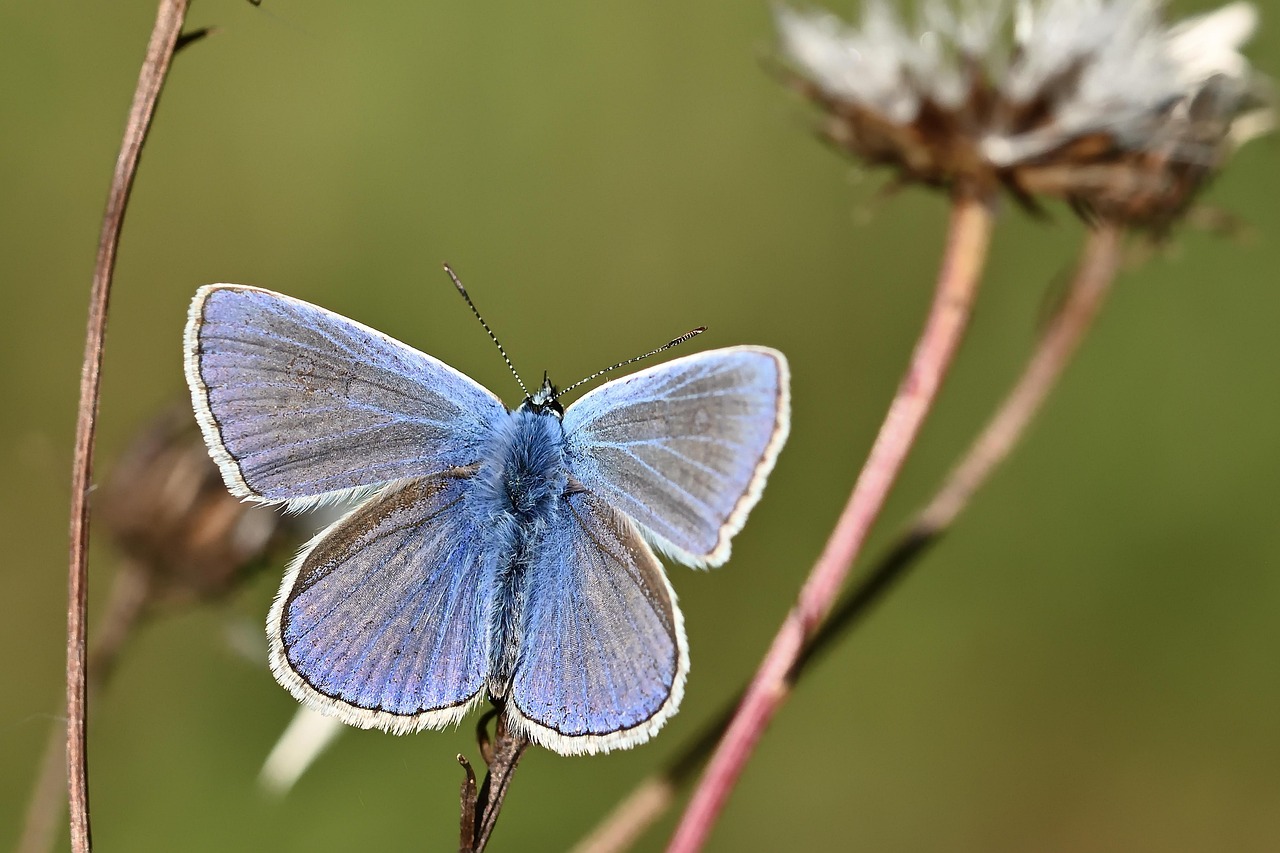The Karner Blue Butterfly typically lays between 300 to 600 eggs during its reproductive cycle. These eggs are deposited on the host plants, primarily wild lupine, which serve as food sources for the larvae once they hatch.
Introduction to the Karner Blue Butterfly

The Karner Blue Butterfly, scientifically known as Lycaeides melissa samuelis, is a small, delicate butterfly that is recognized for its striking blue color. It is considered a threatened species, primarily due to habitat loss and environmental changes. Understanding its reproduction, particularly egg-laying numbers, is essential for conservation efforts aimed at preserving this beautiful species.
This butterfly is found in specific regions of the United States, mainly in the Midwest and parts of New York. Its lifecycle is closely tied to certain types of ecosystems, particularly those with sandy soils where wild lupine (the primary host plant) grows abundantly. The relationship between the Karner Blue Butterfly and wild lupine is crucial for its survival.
The Reproductive Cycle
The reproductive cycle of the Karner Blue Butterfly begins when adult butterflies emerge from their chrysalises in late spring. Males typically emerge first and engage in territorial behaviors to attract females. Once females are ready to mate, they seek out males, leading to copulation.
After mating, females look for suitable locations to lay their eggs. The choice of host plant is critical, as the larvae will feed exclusively on the leaves of the wild lupine once they hatch. This specific plant preference means that the presence of wild lupine is vital for the successful reproduction of the Karner Blue Butterfly.
When it comes to egg-laying, several factors influence the number of eggs a female can produce:
- Health of the Female: A well-nourished female can produce more eggs than one that is stressed or malnourished.
- Environmental Conditions: Temperature and humidity levels can affect reproduction rates. Optimal conditions lead to higher egg production.
- Availability of Host Plants: The abundance of wild lupine in an area directly correlates with the number of eggs laid.
Egg-Laying Behavior
The egg-laying behavior of the Karner Blue Butterfly is quite fascinating. Females often select specific plants based on their health and size. They usually lay their eggs on the upper surfaces of leaves to maximize exposure to sunlight and reduce predation risks.
Each female may lay her eggs over several days, depositing them in clusters or singly. The eggs are small, round, and initially pale green, turning darker as they mature. This camouflage helps protect them from potential predators.
| Stage | Description |
|---|---|
| Egg | Laid on wild lupine leaves. Size: ~1 mm. |
| Larva | Hatches in about 10 days and feeds on leaves. |
| Pupa | Forms after larval stage, lasting about 10 days before emergence. |
Understanding these aspects of reproduction and egg-laying is crucial for conservationists working to protect the Karner Blue Butterfly. By ensuring that suitable habitats with abundant wild lupine are preserved, efforts can be made to support healthy populations of this endangered species.
Factors Influencing Egg-Laying Numbers
Several factors influence the number of eggs laid by the Karner Blue Butterfly. Understanding these variables is essential for conservationists and researchers as they strive to create optimal environments for this species. Below are some of the key factors that can affect egg-laying:
- Female Age: Older females often have more experience in locating suitable host plants. This experience can lead to higher egg production.
- Environmental Conditions: Favorable weather conditions, such as moderate temperatures and adequate rainfall, promote healthy plant growth. This, in turn, provides better food sources for the larvae.
- Population Density: In areas where Karner Blue Butterflies are abundant, competition for resources may limit egg-laying. Conversely, in low-density areas, females may lay more eggs due to reduced competition.
- Predation Pressure: The presence of predators can influence female behavior during egg-laying. If predation is high, females may choose to lay fewer eggs or seek safer locations.
- Host Plant Quality: The health of wild lupine plants is critical. Poor-quality plants may not provide enough nutrients for the larvae, leading to fewer eggs being laid.
The Lifecycle of the Karner Blue Butterfly
The lifecycle of the Karner Blue Butterfly comprises four main stages: egg, larva (caterpillar), pupa (chrysalis), and adult butterfly. Each stage plays a vital role in the development of the butterfly and is influenced by various environmental factors.
Egg Stage
As previously mentioned, females lay approximately 300 to 600 eggs on wild lupine leaves. The eggs are laid individually or in small clusters, providing some protection against predators. After about 10 days, under ideal conditions, these eggs hatch into larvae.
Larval Stage
The larval stage is crucial for growth and development. Once hatched, the caterpillars begin to feed on the leaves of the wild lupine. During this time, they undergo several molts, growing larger with each stage. The duration of this stage can vary based on food availability and environmental conditions.
- Feeding Habits: Larvae primarily consume young leaves. Their feeding patterns can significantly impact the health of the host plant.
- Molt Stages: The larvae typically go through 5 to 6 molts before they are ready to pupate.
Pupal Stage
After completing their growth as larvae, they form a pupa or chrysalis. This stage lasts about 10 days. During this time, significant transformations occur as the caterpillar develops into an adult butterfly.
- Protection: The chrysalis provides a protective casing that shields the developing butterfly from external threats.
- Duration: The duration of the pupal stage can vary based on temperature and other environmental factors. Warmer conditions may accelerate development.
Importance of Habitat Preservation

Given the specific requirements for reproduction and growth, habitat preservation is crucial for the survival of the Karner Blue Butterfly. Conservation efforts focus on protecting areas where wild lupine thrives and ensuring that these ecosystems remain intact.
Efforts include:
- Monitoring Populations: Regular surveys help track butterfly populations and assess habitat quality.
- Restoration Projects: Initiatives aimed at restoring native plant species can enhance habitats for both adult butterflies and their larvae.
- Public Awareness: Educating communities about the importance of conserving natural habitats can foster support for conservation initiatives.
The intricate relationship between the Karner Blue Butterfly and its environment highlights the need for continued research and conservation efforts. By understanding reproduction and habitat requirements, we can take actionable steps to protect this endangered species.

Conservation Challenges for the Karner Blue Butterfly
Despite ongoing conservation efforts, the Karner Blue Butterfly faces numerous challenges that threaten its survival. Understanding these challenges is essential for developing effective strategies to protect this beautiful species. Below are some key challenges impacting the population of the Karner Blue Butterfly.
Habitat Loss
One of the most significant threats to the Karner Blue Butterfly is habitat loss. Urban development, agriculture, and logging have led to the destruction of vital ecosystems where wild lupine, the butterfly’s primary host plant, grows. This loss not only reduces available food sources but also fragments populations, making it difficult for butterflies to find mates.
- Urbanization: Expansion of urban areas often leads to the conversion of natural habitats into residential or commercial properties.
- Agricultural Practices: Intensive farming practices can eliminate wild lupine and other native plants, decreasing habitat availability.
- Logging and Land Clearing: These activities can disrupt ecosystems, leading to a decline in butterfly populations.
Climate Change
Climate change poses another critical threat to the Karner Blue Butterfly. Rising temperatures and changing precipitation patterns can alter the habitats necessary for their survival. Here are some specific impacts:
- Temperature Fluctuations: Extreme weather events can affect the lifecycle of the butterfly, potentially disrupting breeding and feeding patterns.
- Altered Plant Growth: Changes in climate may affect the growth and distribution of wild lupine, leading to reduced food sources for larvae.
- Pest and Disease Pressure: Warmer temperatures can lead to increased pests and diseases that threaten both wild lupine and the butterflies.
Pesticide Use
The application of pesticides in agricultural and urban areas can have detrimental effects on butterfly populations. Pesticides not only affect adult butterflies but also harm larvae and host plants. The following points outline these effects:
- Direct Mortality: Adult butterflies may be killed upon exposure to pesticides during their flight or feeding.
- Indirect Effects: Pesticides can reduce the availability of wild lupine by harming the plants directly or affecting their growth through soil contamination.
- Bioaccumulation: Chemicals can accumulate in the food web, ultimately affecting higher trophic levels, including the Karner Blue Butterfly.
Research and Monitoring Efforts
To combat these challenges, ongoing research and monitoring efforts are vital. Scientists and conservationists are working together to gather data and implement strategies that support the Karner Blue Butterfly’s recovery. The following actions are being taken:
Population Monitoring
Regular monitoring of butterfly populations helps assess their status and identify trends over time. This information is crucial for understanding how various factors impact population numbers.
- Field Surveys: Scientists conduct field surveys to count individuals and locate breeding sites.
- Data Analysis: Collected data is analyzed to determine population dynamics and health.
- Long-term Studies: Longitudinal studies help track changes in populations over years or decades.
Habitat Restoration Projects
Efforts to restore degraded habitats are essential for providing suitable environments for the Karner Blue Butterfly. Restoration projects may include:
- Replanting Wild Lupine: Planting native wild lupine in areas where it has been lost helps rejuvenate habitats.
- Removing Invasive Species: Invasive plants that outcompete native species are removed to improve habitat quality.
- Creating Pollinator Gardens: Establishing gardens with native plants can provide additional food sources and habitats for butterflies.
Community Involvement

Community involvement plays a significant role in conservation efforts for the Karner Blue Butterfly. Educating local populations about the importance of this species can foster support for protective measures. Some initiatives include:
- Workshops and Educational Programs: Offering programs that teach about butterfly ecology and conservation helps raise awareness.
- Volunteer Opportunities: Engaging community members in restoration projects encourages active participation in conservation.
- Citizen Science Projects: Involving citizens in data collection allows for broader monitoring efforts while increasing public interest in local biodiversity.
Future Directions for Conservation
As we move forward, the conservation of the Karner Blue Butterfly will require a multifaceted approach that addresses both immediate challenges and long-term sustainability. Future initiatives should focus on enhancing habitat connectivity, advancing research efforts, and fostering greater community engagement.
Enhancing Habitat Connectivity
One significant step in supporting the Karner Blue Butterfly is enhancing habitat connectivity. Fragmented habitats can isolate populations, reducing genetic diversity and resilience. Strategies to improve connectivity include:
- Creating Wildlife Corridors: Establishing corridors between fragmented habitats can allow butterflies to migrate safely between areas, improving gene flow and population stability.
- Land Acquisition: Protecting additional lands that contain wild lupine or other native plants is essential for expanding suitable habitats.
- Collaborative Land Management: Working with landowners and local governments can help create and maintain connected habitats that benefit wildlife.
Advancing Research Efforts
Continued research is vital to understanding the ecological needs of the Karner Blue Butterfly and the impacts of environmental changes. Key areas for future research include:
- Climate Change Impacts: Studying how climate change affects butterfly lifecycle stages can provide insights into adaptive strategies.
- Pesticide Effects: Researching the impacts of different pesticides on Karner Blue Butterflies can guide more environmentally friendly agricultural practices.
- Genetic Studies: Investigating genetic diversity within populations can highlight the importance of maintaining healthy breeding groups.
Policy and Legislative Actions
Effective policy and legislative measures are crucial for protecting the Karner Blue Butterfly. Advocating for stronger environmental regulations can help mitigate threats from habitat loss and pesticide use. Some important actions include:
- Establishing Protected Areas: Designating critical habitats as protected areas ensures that these ecosystems remain intact.
- Implementing Land Use Policies: Policies that promote sustainable land use practices can help minimize habitat destruction.
- Funding for Conservation Programs: Securing funding for conservation initiatives can enhance research, habitat restoration, and public education efforts.
Final Thoughts
The Karner Blue Butterfly serves as an important indicator of ecosystem health and biodiversity. Understanding its reproduction, particularly egg-laying numbers, provides valuable insights into its lifecycle and conservation needs. The interplay between this butterfly and its habitat underscores the significance of preserving ecosystems rich in wild lupine and other native plants.
As challenges such as habitat loss, climate change, and pesticide use threaten the survival of this species, a collective effort involving scientists, conservationists, policymakers, and communities becomes increasingly vital. By enhancing habitat connectivity, advancing research, and implementing effective policies, we can work towards ensuring a brighter future for the Karner Blue Butterfly.
Ultimately, protecting this endangered species is not just about saving a butterfly; it is about preserving the rich tapestry of life that sustains our natural world. Through continued dedication to conservation efforts and community involvement, we can make a lasting impact on the future of the Karner Blue Butterfly and the ecosystems it inhabits.
